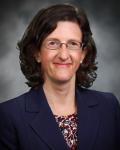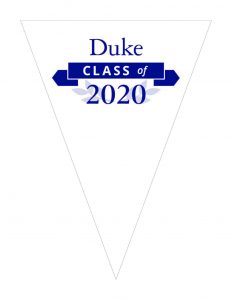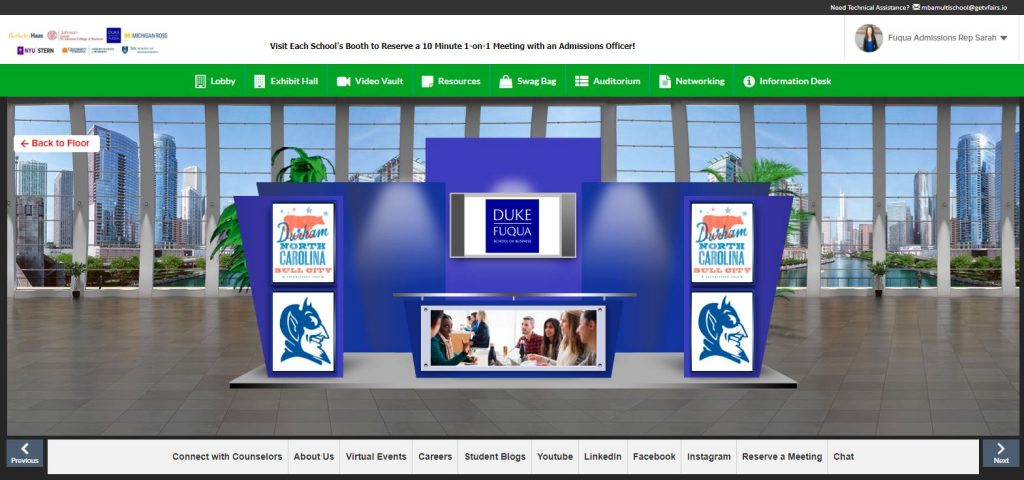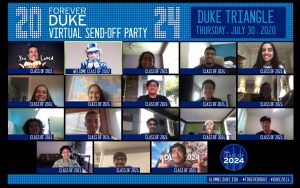The board meeting is a regular milestone of the event season for many planners at Duke. For some, fall board meetings were the second round of virtual meetings since this spring, when the pandemic forced us to pivot quickly. So, for this special edition of Virtually Yours, rather than feature one planner, we are highlighting nearly a dozen planners from across campus, who shared their experiences with virtual board meetings.
Because everyone defaulted to using Zoom for their virtual board meetings, the next big change to navigate was the meeting schedule. A few boards opted for virtual schedules that were not significantly shorter than their face to face events, however, these were the exception. Several planners hosted board meetings in a single abbreviated session, ranging from two to four hours. A few others were successful with the formula of multiple, shorter sessions, either on consecutive days, or spread out over the course of a few weeks or months. Regardless of the schedule, the board members’ needs and feedback were top considerations:
- We did get feedback that four hours, even with breaks and lunch, is a long time to be on a Zoom call. On the other hand, we also heard from board members that breaking up the meeting over the course of one or two days was also problematic… It’s a delicate balance. Duke Alumni Association
Was board member participation impacted by going virtual? For the most part, the virtual meeting format resulted in similar and even greater participation from board members:
- Since they did not have to travel to campus, trustee attendance has actually been better. Plus, due to the pandemic, the trustees’ schedules are not quite as busy as normal: we’re not competing with travel for business and other big events. Board of Trustees
- The majority of our members are practicing physicians, and the virtual setting allowed them to attend from their office and come and go if needed. Medical Alumni Council
- It was also much easier to schedule administrator participation, and we could more easily involve our scholarship students in between classes. Women’s Impact Network
And while there are distinct advantages to the virtual format, it hasn’t been ideal for everyone:
- Our Nursing Alumni Council is also comprised of Emeritus members and I have seen a decline in their participation. School of Nursing
- It’s harder to engage the non-alumni parents in the virtual format. Parents Committee
- “Unengaged” board members still didn’t join the virtual meetings. Annual Fund Advisory Board
Just as with face to face board meetings, virtual meeting agendas rely heavily on live reports and presentations from speakers. Nonetheless, planners are adapting their delivery of content to the new environment, format and schedules:

- We have limited the amount of information sent in advance to our board. We have replaced long reports with bullet pointed information and links so they can read more if they like. Nasher Museum of Art
- We make sure that PowerPoint presentations are dynamic, and include video elements with music and great visuals. Duke Libraries
- We were very intentional about helping board members feel connected to campus, since they are unable to visit in person. During one meeting break, I shared Duke themed digital jigsaw puzzles created with Jigsaw Planet. On Day 2, we kicked off our meeting at 5PM with the Facebook livestream of the Duke Chapel Carillon. Young Alumni Development Council
To make the most of the compressed schedule of many virtual board meetings, several units assigned readings for homework:
- The committee members understood that pre-reading would help them get the most out of the meeting and keep the meeting moving efficiently. Women’s Impact Network
- Participants appreciated having the information they needed to dive right into the packed agenda. Materials also offered context for the break-out groups, which made those discussions more fruitful. Duke Alumni Association
Encounters such as informal chats at the coffee station or in the hallway, and traditional social events, are missing from board meetings in Zoom. Yet social interaction actually contributes to a productive virtual meeting:
- With this group of young donors, I think it’s important to begin the meeting with some social time, to renew connections, and to warm everyone up to participating in subsequent discussions. Young Alumni Development Council
- They received a lot of great information, but we’ll plan differently for the next meeting to have more opportunities for discussions and conversation. School of Medicine
Many planners have adjusted their agendas to foster informal interaction:
- Even though the meeting was very business oriented, we had a brief ice breaker exercise for new members of the board. Duke Alumni Association
- We’ve been opening Zoom rooms approximately fifteen minutes before the scheduled start time. This way, trustees who wish to join early can spend some time socializing with each other. Board of Trustees
And some took the concept even farther, hosting virtual cocktail parties during the board meetings:
- Our virtual cocktail receptions typically have opening remarks from the president and board chair and then we place attendees in breakout groups for smaller conversations. We switch up the breakouts after fifteen minutes, so they get the chance to chat with different people. Board of Trustees
- One of the national co-chairs led a cocktail demo, and we shipped a virtual meeting kit to attendees ahead of time, with printed recipe cards and Duke branded cocktail napkins. Young Alumni Development Council
We asked planners what was most challenging about planning and producing their virtual board meetings, and general impressions varied:
- Not unlike a traditional board meeting, it’s challenging when the program content comes together at the last minute. Annual Fund Advisory Board
- Planning this board meeting is by far easier than planning an in-person one. The only real challenges are keeping up with timing and technical difficulties. Duke Libraries
Indeed, when we drilled down a little further, the technical challenges were a common theme:
- It is still a challenge to get new Zoom users connected. We also have to encourage audience members to ask their questions live rather than just putting the questions in chat. Nicholas School of the Environment
- The most challenging element has been the internet connectivity of the speakers. During one meeting, we were forced us to adjust the entire agenda on the spot so the speaker could troubleshoot and present later in the meeting. School of Nursing
- I think the most challenging aspect of the meeting was the coming and going of speakers throughout the meeting. We worked with our events team to create a virtual green room for speakers to test slides, mics and cameras, so they would be prepared to join the ongoing meetings with confidence. Medical Alumni Council
And this technical theme was underscored with additional helpful tips for others planning virtual board meetings:
- Learn everything you can about Zoom, and conduct many Zoom meetings and practice sessions in advance of your actual board meeting. Duke Libraries
- Remember: if you are recording a meeting, when your attendees are in breakouts, you ae still being recorded in the main session! Women’s Impact Network
- Make sure that you have two people behind the scenes for audience support: one who board members call when they have connection issues, and another who monitors the chat messages and mutes audience members as needed. Nicholas School of the Environment
- Enlist help: you can always use an extra pair of hands to handle the unexpected. This is just as true of virtual events as with live events! Annual Fund Advisory Board
Congratulations to event planners and volunteer managers across campus on a great season of board meetings, and special thanks to the contributors to this article!
Laura Brown, Assistant Secretary to the Board of Trustees and Director of Board Operations, Office of the University Secretary
Lisa Dilts, Senior Director Special Events, Duke Alumni Affairs
Kim Garcia, Senior Director Special Events, University Development (AFAB, Parents Committee)
Marla Gregg, Director, Alumni and Development Programs, Duke School of Nursing
Stephanie Lowd, Director of Strategic Events, Duke Health Development & Alumni Affairs (School of Medicine)
Katie O’Grady, Development Projects Coordinator, Nicholas School of the Environment
Katryna Robinson, Executive Assistant to the Vice Provost, Duke Libraries
Brie Russell, Senior Director, Alumni and Regional Engagement, Duke School of Medicine (Medical Alumni Council)
Kym Trimarchi, Senior Assistant Director Special Events, University Development (WIN)
Stephanie Wheatley, Director of Development & Major Gifts, Nasher Museum of Art
Kathy Wright, Senior Assistant Director Special Events, University Development (YADC)
Kathy Wright, Editor













 isor, Kathryn Davies (Associate Director, Fuqua Admissions), who found the Vfairs platform and became S7’s fearless leader this year, plunging head-first into the virtual fair world with gusto and aplomb!
isor, Kathryn Davies (Associate Director, Fuqua Admissions), who found the Vfairs platform and became S7’s fearless leader this year, plunging head-first into the virtual fair world with gusto and aplomb!





